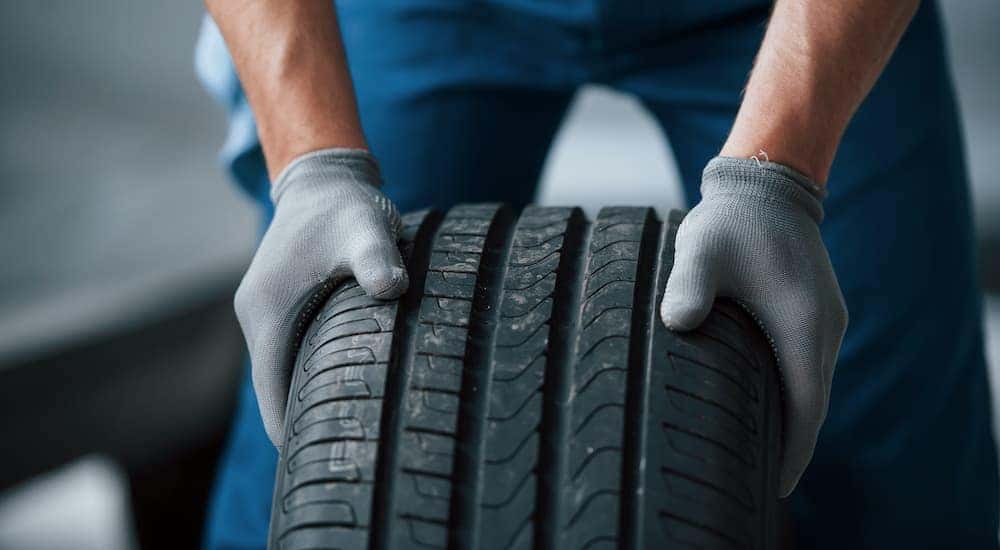Morris Tire: Exceptional Tire Solutions for All Autos
Morris Tire: Exceptional Tire Solutions for All Autos
Blog Article
Tire Fixing Myths Debunked: Separating Reality From Fiction
In the world of automotive maintenance, tire fixing holds a significant area, yet it is usually shrouded in misconceptions and misconceptions that can result in confusion for automobile owners. Understanding the difference between truth and fiction when it comes to tire repair service is important for guaranteeing both safety and security and cost-effectiveness. From the false impressions bordering patching versus plugging a punctured tire to the effectiveness of different tire sealants, there are a number of crucial areas where clearness is needed to make enlightened decisions. Allow's drop light on some usual tire repair work myths and different them from the fact to empower you with the expertise needed to navigate this crucial facet of automobile maintenance.
Usual Tire Fixing Misconceptions
Resolving common mistaken beliefs surrounding tire repair is vital for maintaining roadway security and prolonging the durability of your lorry's tires. It is necessary to understand that not all leaks are developed equal; while some may without a doubt call for a tire substitute, the bulk can be safely fixed.
Another mistaken belief is the concept that a do it yourself tire fixing kit is a sufficient option for all tire concerns. While these kits can be convenient for short-term repairs in emergency situations, they are not a permanent remedy and may not attend to the underlying issue (discount tires morris il). Seeking the experience of a qualified tire professional is always suggested to make certain the safety and security and stability of the tire

Can You Fix a Punctured Tire?
Fixing a punctured tire is a common method in the auto industry, often lugged out by expert specialists adhering to specific standards and requirements. Slits located on the walk area of the tire are normally repairable as lengthy as they are within a particular dimension restriction and do not influence the tire's structural integrity.
It is necessary to note that pierces near the sidewall or shoulder of the tire are typically not repairable as a result of safety worries. Such locations go through considerable stress you can check here and anxiety and flexing, making repair services unreliable and possibly harmful. In addition, if the puncture is as well big, exceeding the recommended repairable size, or if the tire shows indications of inner damage, it is much safer to change the tire altogether.
The Fact Regarding Patching Vs. Connecting
When taking into consideration the repair work of a punctured tire, understanding the differences between patching and connecting is crucial for making informed choices regarding tire maintenance and safety. Covering entails repairing the tire from the inside, where a spot is related to cover the slit. This approach is taken into consideration even more reliable and long-lasting as it deals with the damage internally, reducing the threat of air leakage and additional tire damages. On the other hand, connecting is a quick solution that includes inserting a rubber link into the punctured area from the exterior. While connecting is convenient and can be done without eliminating the tire from the edge, it is normally thought about a short-lived service and may not supply the same level of durability as a spot.
Misconception: All Tire Sealants Are Reliable

When picking a tire sealer, consider variables such as the dimension of punctures it can efficiently fix, compatibility with tire pressure tracking systems (TPMS), and whether it is safe for the tire product. Reviewing testimonials and seeking suggestions from experts can help you make a notified decision. Additionally, normal maintenance and timely substitute of sealant can assist guarantee optimum efficiency. Remember, while tire sealers can be helpful in emergencies, they are not an alternative for appropriate tire care and upkeep.
Best Practices for Handling Flat Tires
In light of the varying performance of tire sealers, comprehending ideal practices for dealing with level tires is essential for keeping roadway safety and car efficiency. Loosen up the lug nuts, elevate the automobile with the jack, eliminate the lug nuts and level tire, and replace it with the spare tire. Stow away the flat tire, devices, and equipment, and keep in mind to examine the spare tire's stress periodically.
Verdict
In final thought, it is essential to separate fact from fiction when it concerns tire repair work misconceptions. Understanding the reality concerning covering vs. connecting, the efficiency of tire sealers, and finest techniques for handling punctures can aid guarantee the safety and security and durability of your tires. By exposing usual false impressions and complying with proper repair guidelines, you can site make informed decisions when it concerns maintaining the health of your car's tires.
Report this page